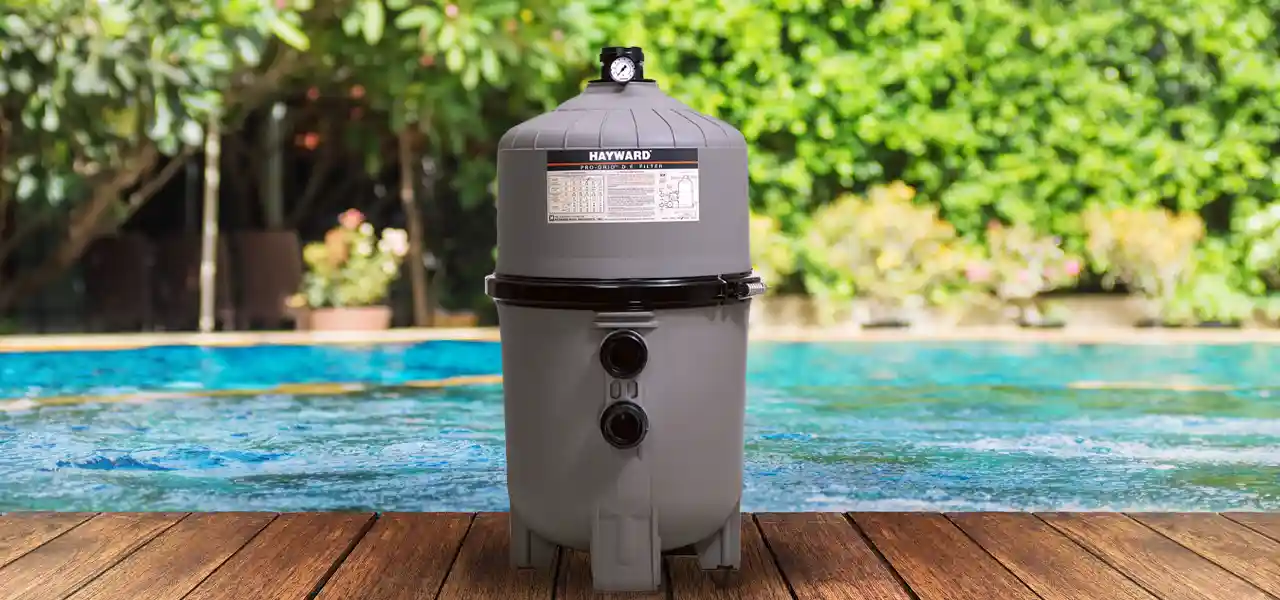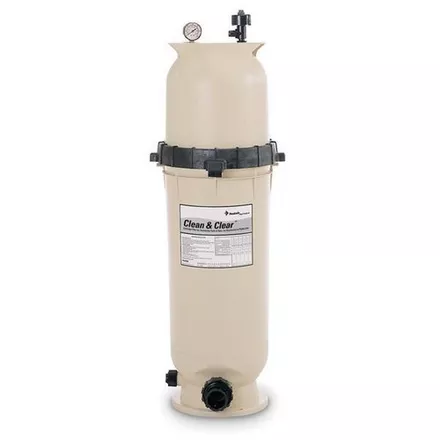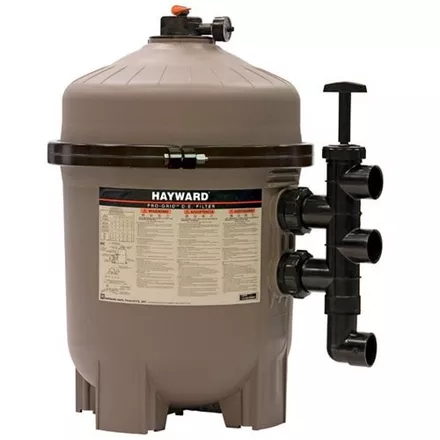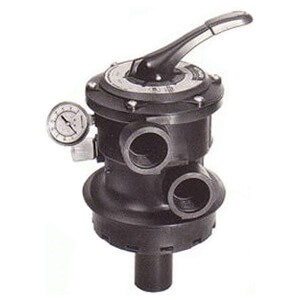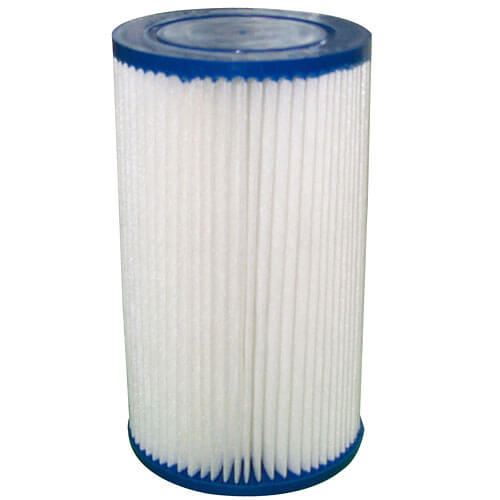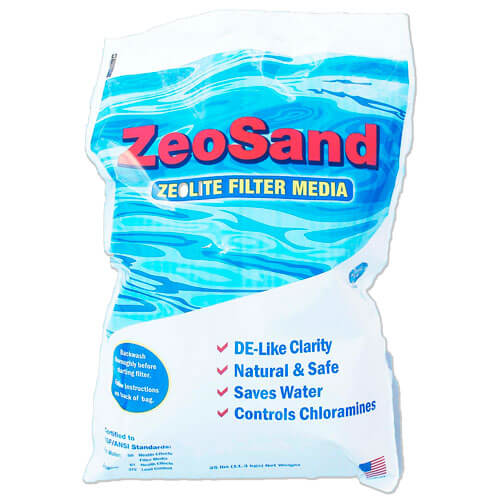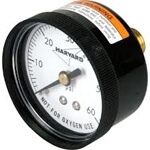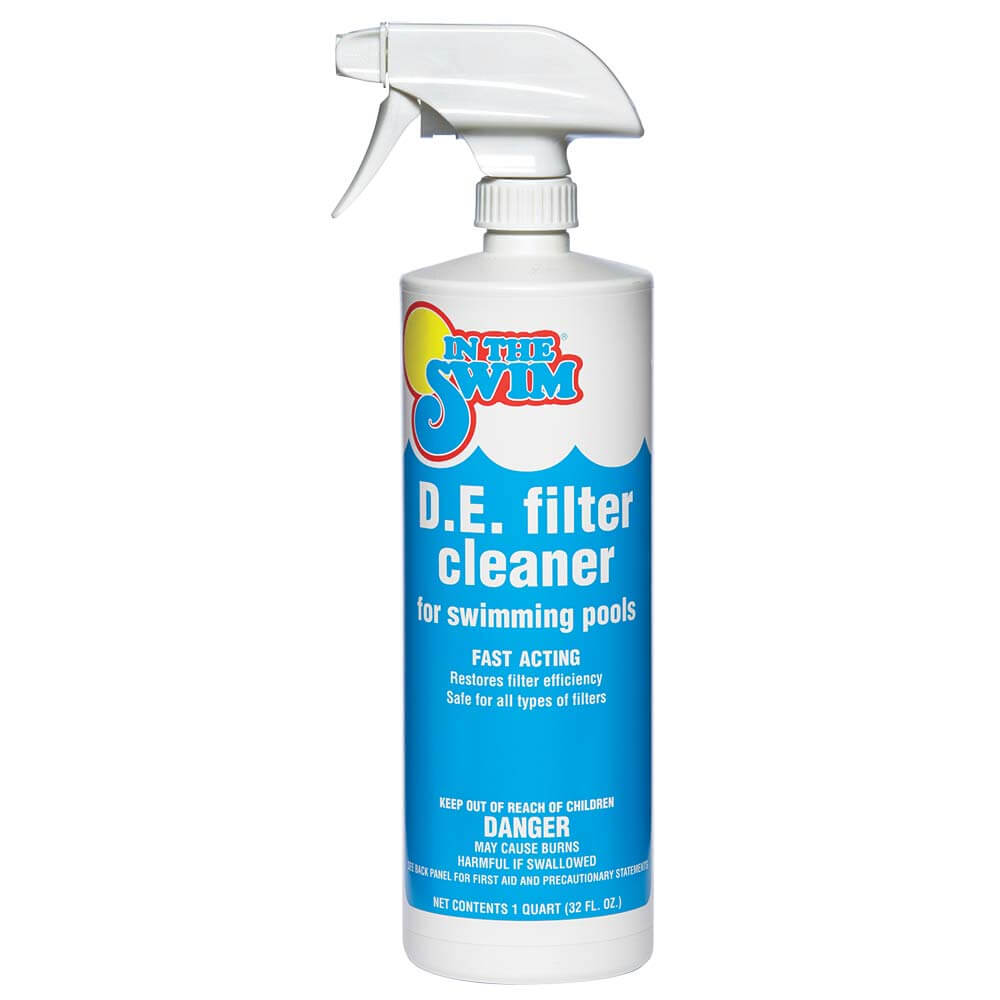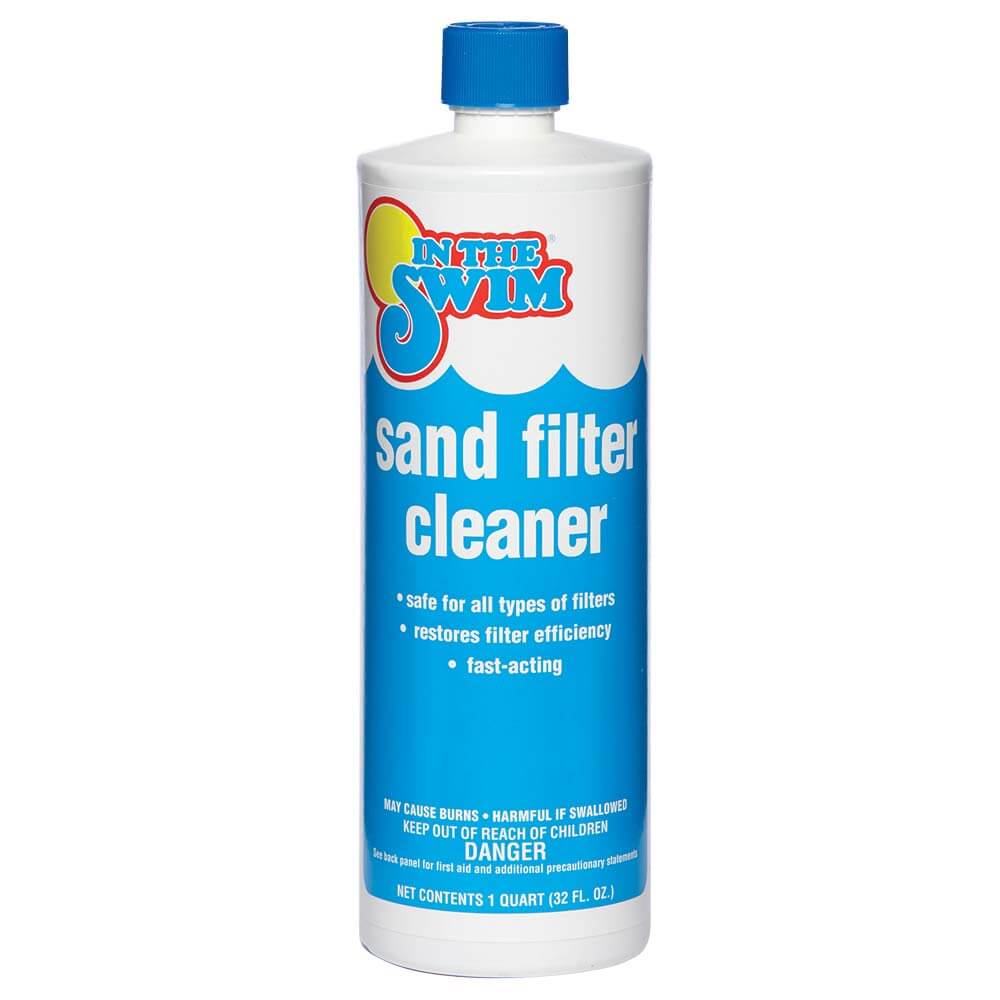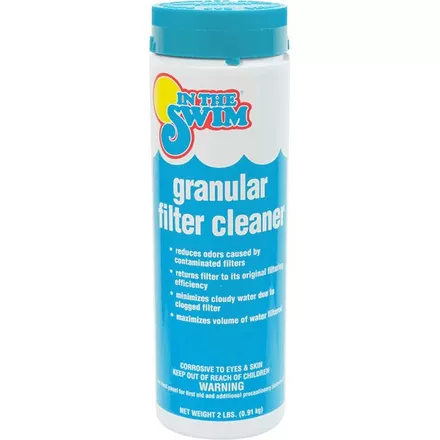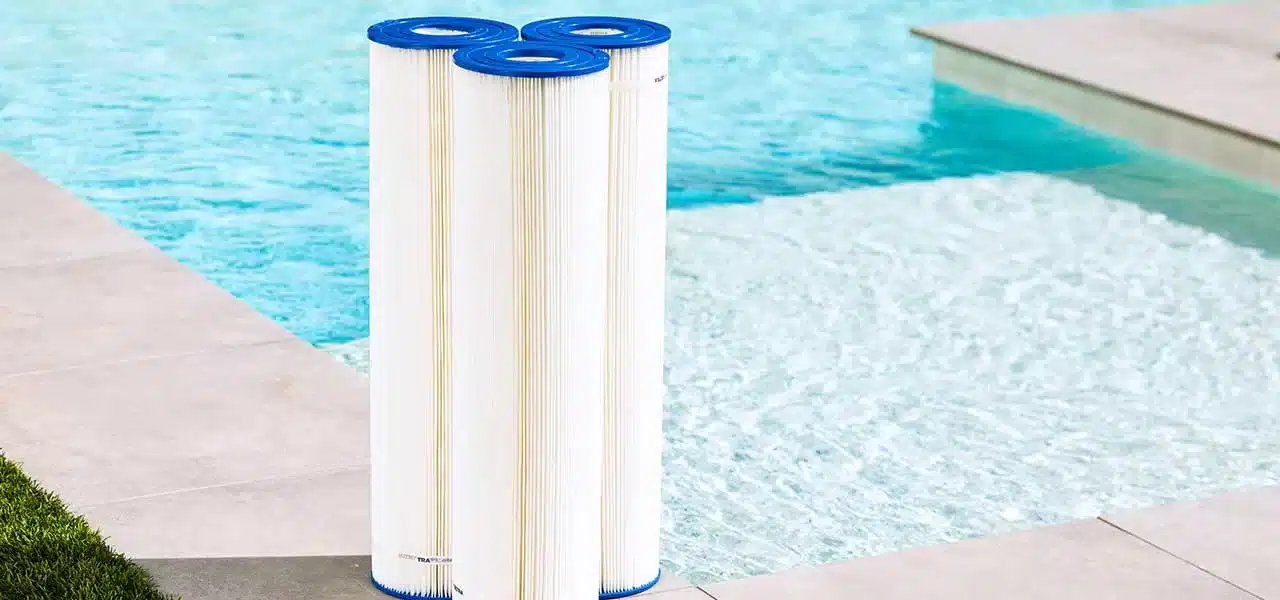Diatomaceous Earth (D.E) pool filters are superior filters, as compared to sand and cartridge filters, which cannot come close to D.E.’s ability to remove particles as small as 2 microns. However, D.E. filters are known to require more maintenance, and not just because you have to add more D.E. powder after backwashing, but mainly because there are just more parts inside the filter tank.
One of the best things you can do to maintain proper D.E. filtration is to open up the filter tank and clean the filter grids. This is done during pool winterization, or every 6 months of use, for sunbelt pools open all year.
Types of D.E. Filters
Today there are two types of DE filters in use, Vertical Grid filters, and Hayward’s Perflex filters which use a cylindrical ‘Flex Tube’, shown right. Both vertical grids and Flex Tubes, aka ‘Fingers’, are covered in a mesh polyester fabric, with pores small enough to allow water to pass through, but not the DE powder.
How D.E. Filters Operate
The fabric covering the grids or tubes serves to hold the DE powder, which covers the fabric. As the water passes through the powder, the dirt is trapped in the powder’s microscopic pores. The powder is the filter, not the grids.
Over time, the DE powder will trap so much dirt, oil and debris that water will have a harder time passing through, which will raise the filter tank pressure and reduce the flow rate. Eventually it becomes necessary to flush out the dirty DE powder in a backwash process.
Why a Deep Clean is Necessary

Backwashing does not flush out all of the powder, sometimes only half of it is actually removed. Adding a full dose of DE powder afterwards can lead to bridging between the grids, resulting in less effective filtration.
Opening up the tank to hose off all of the powder every six months, is important to maintain filter performance. And for pools that winterize and drain the filter tank, allowing the DE powder to dry onto the grids creates clogging problems the following year.
Minerals and Oils also build up within the filter fabric of a DE grid or Flex Tube, which backwashing does not remove effectively. Hosing clean will remove some (even if using the Mega Blaster DE Cleaning Tool), but for best results a chemical soaking is used to remove mineral scale and oily deposits.
Cleaning Vertical D.E. Grids
- Open air bleeder and remove filter drain plug to drain water from the tank.
- With the proper wrench or socket, loosen the bolt and remove the clamp.
- Loosen the lid and pull it straight off. A flat tool may be needed to pry it off.
- Spray grids with a hose, to remove most of the heavy DE powder.
- Lift up on sides of top manifold, with a slight twisting motion, to free the grids from the standpipe. Two people may be needed, to lift the grid assembly out.
- Place grids on a stable area, being careful not to let the assembly fall over, which can crack the top manifold.
- Do not take the grid assembly apart, but spray water fully in-between the grids, to completely clean grids on both sides.
- Replace grids carefully back into tank, applying a small amount of lube to the standpipe o-ring, found on Pentair and Hayward filters.
Cleaning Perflex Flex Tubes
- Shut off the pump, push bump handle down slowly and up quickly, 8 times.
- Open vent valve and remove filter drain plug to drain water from the tank.
- After draining completely, turn the filter pump on for 5 seconds to flush tank.
- Close vent valve and drain plug. Turn on pump to fill tank. Repeat steps 1-3.
- If not winterizing, restart pump to fill filter with water, adding new DE powder.
DE Filter Chemical Cleaning Solutions
Hosing off the filter grids, or performing the Perflex cleaning procedure as described above is suitable in most cases, however a chemical cleaning may be necessary from time to time to remove mineral scale and oily deposits.
Mineral Deposits
Primarily calcium scale from pools with high levels of calcium hardness, or from improper water balance. Scale will rapidly clog the pores of DE grids and Flex-Tubes, causing short-cycles to occur.
Scale can be removed by soaking the Flex Tube Nest Assembly or the DE Grid Assembly in a 20% solution of Water and Muriatic Acid (5:1 ratio). Soak Flex Tubes in a large bucket and DE Grids in a large (clean) trash can for several hours, and then hose off thoroughly.
Oil Deposits
A more common problem than calcium build-up, oil and grease can be a real problem for DE filter grids and Flex Tubes. Suntan lotion, hair products, cosmetics and wind blown oils, in addition to o-ring lubricants and light oils found on plastic and vinyl products can all clog your DE filter.
Oils can be removed by soaking filter grids in TSP and hot water, using 1/2 lb. per 5-gals of water. You can also use our DE Filter Cleaner or Natural Chemistry’s Filter Perfect chemical to spray or soak the DE Grids or DE ‘Fingers’. For pools with continuous problems with oils, try Jack’s Magic Filter Fiber as a replacement for DE powder.
Stains
It’s not uncommon to see DE grids or fingers turn a yellowish color, or even a rust color over time. In most cases this will not affect the filtration too much, but some stains can also contain other particles, which can reduce the small pores of the DE filter fabric.
To remove stains on DE filter grids or Perflex Flex Tubes, I recommend using our Granular Filter Cleaner chemical, which is a combination of scale and stain fighters, and can restore the near-new color to DE grids and fingers, while increasing filter flow rates.
Replacing DE Filter Grids
If during your cleaning and servicing, you notice several holes or the threads beginning to unravel or the grid material deteriorating, it may be time to replace the filter grids, which is the subject of this related post, DE Filter Grid Replacement.
For Perflex filters, you can buy the flex tubes individually or in 5-packs in our parts department. You can also buy the complete flex tube assembly, called the ‘Filter Nest’.
Inspecting DE Filter Grids
To Inspect your DE filter grid assembly, look for:
- Tears or rips in the fabric, especially at the seams and the bottom center.
- Broken tabs on the top, where the grid inserts into the manifold.
- Cracks in the manifold (don’t let it fall over!)
- Missing or damaged air bleeder screen or sock on the manifold.
- Loose assembly; missing through wing nuts on thru-bolts.
- Missing or damaged standpipe o-ring; where the manifold fits on.
- Mis-spaced or mis-aligned grids.
An annual inspection and cleaning should keep your DE filter running in tip-top shape. But don’t wait if your filter starts acting funny – you can do this anytime!

